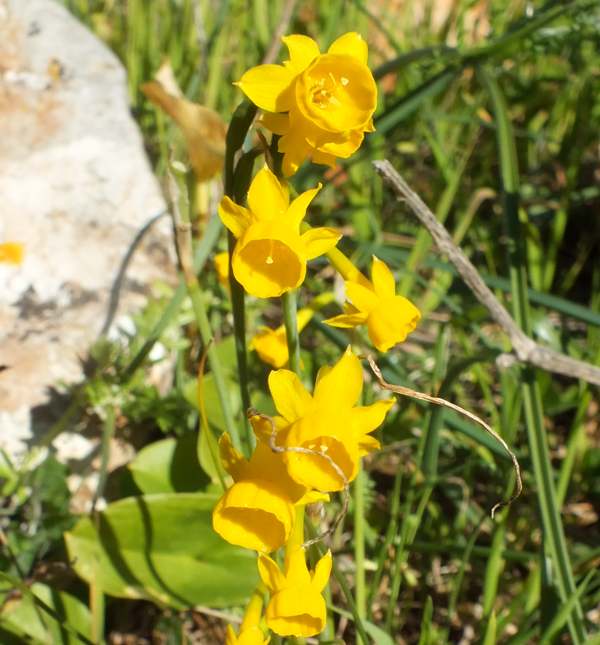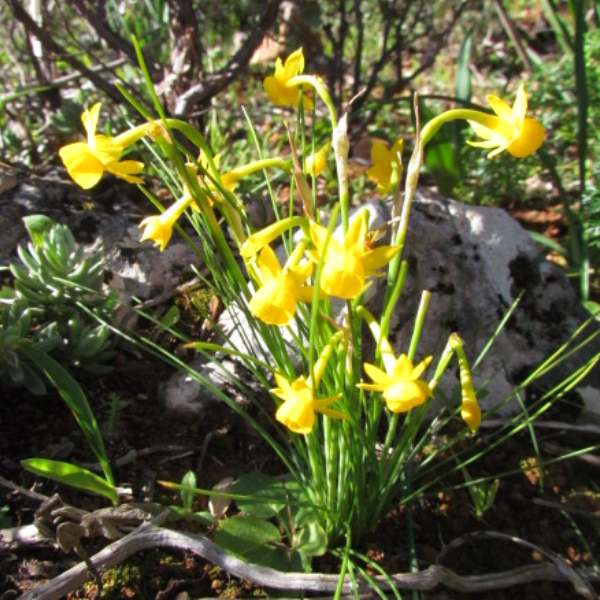Narcissus calcicola
Phylum: Magnoliophyta - Class: Equisetopsida - Order: Asparagales - Family: Amaryllidaceae

Description
This miniature daffodil grows to a height of 20cm and has orange-yellow flowers 10 to 22mm in diameter, with a tubular corola (cup) typically 8 to 10mm in diameter. The pointed perianth segments (petals) are to a variable extent reflexed.

Distribution
Narcissus calcicola is a rare and endangered member of the Daffodil family. It is on the Red Data List of plants and is an endemic of the Iberian Peninsula, now confined to a few locations in the Badajoz, Almeria and Granada regions in Spain, and in the Algarve in southern Portugal.

Blooming times
This striking daffodil can be seen in flower in late January and February.
Habitat
Narcissus calcicola grows in inhospitable areas of limestone rock where its inaccessibility provides it with protection from both grazing animals and Mankind.
Etymology
The specific epithet calcicola referes to the carcareous substrates on which this plant is found.
Uses
For those who want to grow this plant in their gardens, it is possible to buy the bulbs through properly regulated suppliers, many of whom can be found through their websites. Once established it spreads and increases its numbers with relative ease. Despite growing in limestone in the wild, it will also tolerate slightly more acid conditions in cultivation.
The specimens shown here were growing on a steep, rocky hillside in the Algarve region of Portugal during February.
Please Help Us: If you have found this information interesting and useful, please consider helping to keep First Nature online by making a small donation towards the web hosting and internet costs.
Any donations over and above the essential running costs will help support the conservation work of Plantlife, the Rivers Trust and charitable botanic gardens - as do author royalties and publisher proceeds from books by Pat and Sue.

